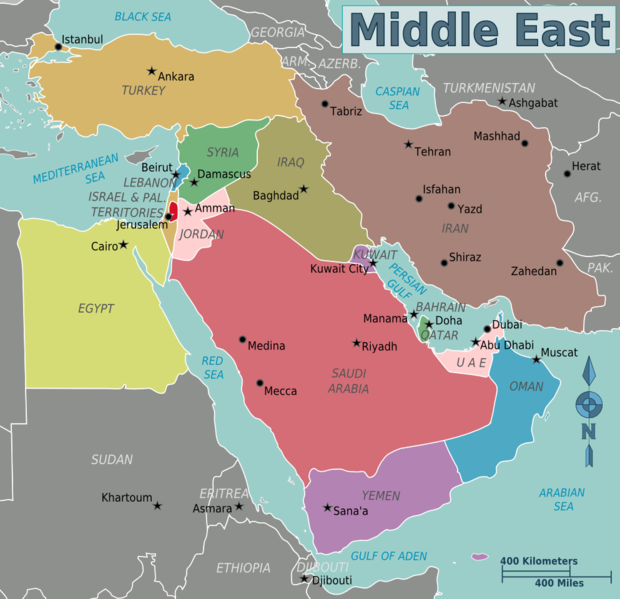Let’s talk about the Middle East.
What do you think of when you hear “Middle East?” Is it Aladdin in a far-off, exotic place with a genie and a magic carpet? Is it famine and war? I bet ISIS came to mind. Is it vast deserts littered with oases? Perhaps it is beheadings, burqas, protests or even prosperous princes and princesses. The thing is, the Middle East is incredibly diverse and its borders are the subject of constant debate.
So, what is the Middle East, exactly?
According to Wikipedia, “the Middle East is a transcontinental region centered on Western Asia, Turkey (both Asian and European), and Egypt (which is mostly in North Africa).” This is a confusing definition that leaves more questions than answers. In actuality, the modern Middle East is comprised of 22 countries, some of which scholars agree on and others on which they do not. The term itself is always under scrutiny. Whereas other regions, such as the Balkans or even eastern Europe, have been clearly defined, the Middle East has not.
In fact, the term was coined by an American named Alfred Thayer Mahan to distinguish “Arabia” and India. As you can see, the Middle East has always suffered from a broad brush stroke that would sentence it to a variety of orientalist misconceptions.
RELATED: Column: In political polarization, we’re part of problem
The Middle East is filled with a variety of peoples. Arabic tends to be the lingua franca, but Hebrew, Kurdish and Persian are also spoken by large groups of people. There are also roughly 20 minority languages spoken in the 22 countries that dot Asia, Africa and a few islands.
Although Islam is the dominant religion, Christianity and Judaism are also practiced. The vast majority of them live in harmony and have for centuries. It is not just these three that are practiced either. Samaritanism and Yazidism are just two of the other religions people follow. It is not as black and white as Islam being the only religion tolerated, and it never has been.
The Middle East has a deep and intricate cultural history that Disney’s Aladdin does a great injustice to. There are a myriad of philosophers and intellectuals that have contributed to the advancement of humanity, but have never reached a western audience, such as Ibn Sina and Ibn al-Muqaffa.
The movies and media surrounding the Middle East revolve around terrorism and war. Rarely is there ever a film that depicts normal life in the absence of violence and destruction. They also almost always portray Middle Eastern women as burqa-clad and unhappy.
Due to the hazy narrative the West has concocted, it is difficult to view the Middle East for what it actually is. The U.S. has had exactly zero female presidents, and the Middle East has had nine female heads of state. This destroys the notion that the U.S. is somehow a better place to live and treats minorities and women equally and with more respect.
RELATED: OPINION: Arizona about to elect its first female senator, but gender equality issues remain
The history of the Middle East is complicated and the one-minute news stories you see broadcasted on CBS and ABC hardly do it justice. There are problems in the region, and a great number of them, too, but instead of trying to humanize and understand them, we jump to terrorism, savagery and misconceptions of a group of 411 million people.
Sound familiar?
Middle Eastern politics and current events are hard to understand if you don’t have a basic knowledge of history, which news organizations conveniently skip over. It is exhausting to discuss the hot topics of today, such as terrorism and ISIS, without knowing even a general picture of what the Middle East actually is.
A layperson will only see Aladdin and war when there is the potential to see so much more. Such a compact phrase as “the Middle East” that rolls off the tongue so easily actually has a virulent punch when viewed under a microscope.
Talking about the supposedly minuscule aspects of the Middle East proves to be the most helpful in deciphering current events.
Follow the Daily Wildcat on Twitter









